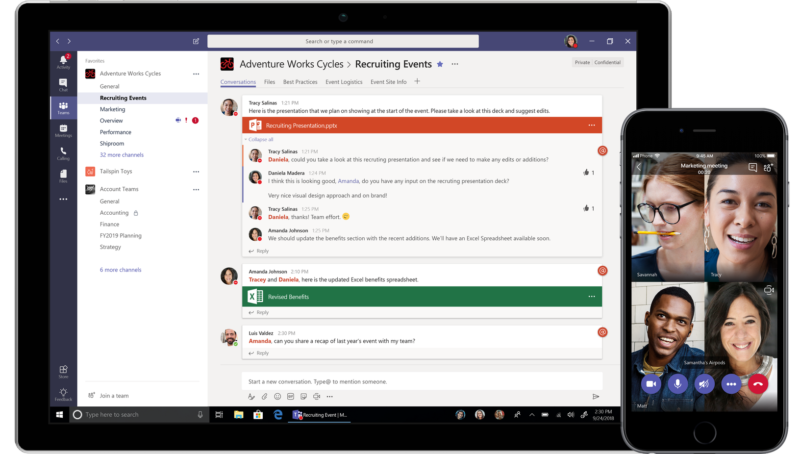Microsoft finally gives Teams what it needs to take on Slack: A free version

Enlarge / Microsoft Teams on different devices. (credit: Microsoft)
Ever since its introduction, Microsoft's Teams-a collaboration tool for chatting, sharing documents, video, and voice calling-has had one major competitor: Slack. Teams was clearly built as a response to Slack's growing enterprise presence, with its model of IRC-style chatrooms winning hearts and minds.
Thus far, Microsoft has pushed Teams' extensive integration with the company's other products-Office, Skype, SharePoint-as its major distinguishing feature, but Slack has had one important capability that Teams has lacked. The starting price for Slack is free. The free version has all sorts of limitations-only 5GB of files can be saved, only 10,000 lines of chat can be viewed, and integrations with other applications are restricted-but it's enough to get a sense of how the product works and how it can fit in an organization. The free version also means that Slack has found a role in various non-paying spheres, such as open source development, serving a similar role to the one once served by IRC.
Today, Microsoft is offering a free version of Teams that anyone can sign up to and use. Like the free Slack tier, there are limitations to the free Teams, but Microsoft has picked a very different set of restrictions than Slack's. There's no 10,000 message limit-even free users can access and search all their chat history-and the data limits are substantially higher, at 10GB plus 2GB per person. Free Teams supports group voice and video calling, too; Slack's free tier is restricted to 1:1 video calls. Application integrations are unrestricted, and Microsoft is of course continuing to promote the tie-ins with the online versions of Word, Excel, PowerPoint, and OneNote.
Read 3 remaining paragraphs | Comments